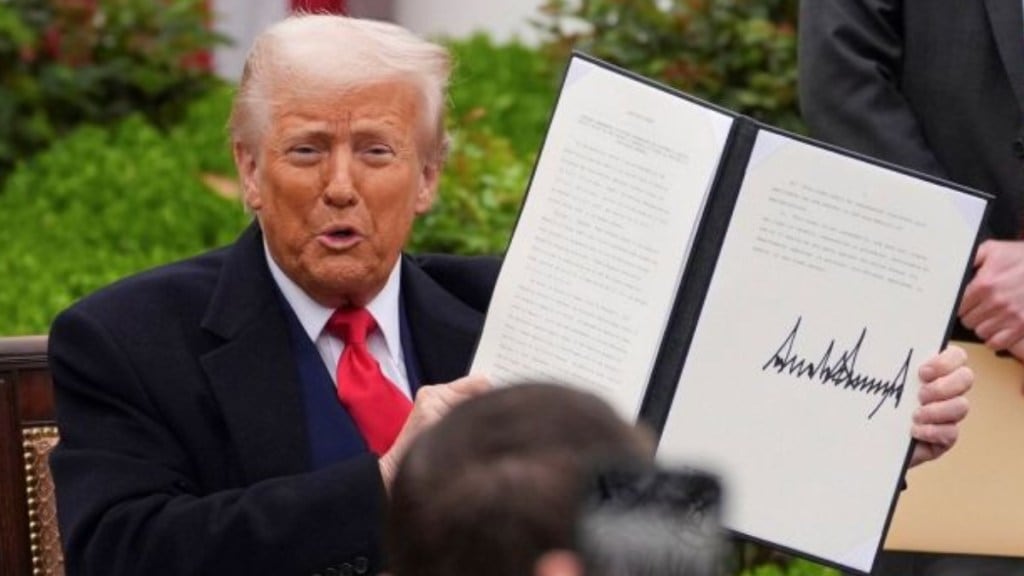US President Donald Trump announced on Wednesday a broad plan to impose tariffs on potentially trillions of dollars’ worth of imported goods. However, the specifics—such as the tariff rates and the number of affected countries and products—remain uncertain. Trump has labeled the move “Liberation Day.”
The announcement follows a series of tariffs Trump has already imposed on steel, aluminum, automobiles, and all Chinese imports. He argues that these measures will bolster US manufacturing and protect domestic jobs by making foreign goods more expensive. However, consumers may face rising prices as a result.
Starting Thursday, tariffs on imported vehicles will take effect, while additional levies on certain auto parts are expected to be implemented in May or later.
What will become more expensive for Americans?
Cars
With tariffs on foreign-made vehicles looming, the cost of car ownership in the US is set to rise. Analysts predict these measures could add thousands of dollars to the price of cars, parts, repairs, and insurance.
A report from Anderson Economic Group estimates that tariffs on auto parts from Canada and Mexico alone could increase vehicle costs by $4,000 to $10,000, depending on the model. While industry experts anticipate these costs will be passed on to consumers, Trump has dismissed these concerns, insisting that the move will push Americans to buy domestically manufactured vehicles.
Groceries
Everyday grocery items, particularly fruits and vegetables, will likely become more expensive due to increased tariffs on imports from Mexico, Canada, and China. Many of the most commonly purchased fresh produce items in the US originate from these countries, making them vulnerable to price hikes.
For instance, 90% of avocados consumed in the US are imported from Mexico. If tariffs drive up costs, consumers could see higher prices for avocados and avocado-based products like guacamole. The US Agriculture Department has warned that similar increases could affect a range of imported produce.
Housing
Canada supplies about one-third of the softwood lumber used in US home construction, making it a key target for Trump’s trade measures. While Trump has claimed the US has sufficient lumber supplies, the National Association of Home Builders (NAHB) has expressed “serious concerns” that the tariffs will escalate construction costs and slow down new home developments.
With most American homes built using wood, these tariffs could push up housing prices, ultimately placing the burden on consumers. The NAHB has warned that broader import restrictions on building materials could further exacerbate the issue.
Fuel Prices
Canada is the largest foreign supplier of crude oil to the US, accounting for 61% of oil imports between January and November 2024, according to official trade figures. Although the US has its own oil reserves, many American refineries are optimized to process heavier crude oil, which primarily comes from Canada and Mexico.
If Canada retaliates by cutting crude oil exports to the US, fuel prices could surge. The American Fuel and Petrochemical Manufacturers group has warned that such a scenario could reduce gasoline, diesel, and jet fuel availability, impacting consumers nationwide.
Alcohol
Imported alcoholic beverages—including Mexican beers like Modelo and Corona—may see price hikes if importers transfer higher tariff costs onto consumers. Industry representatives from the US, Canada, and Mexico have emphasized that products such as bourbon, Tennessee whiskey, tequila, and Canadian whisky are region-specific and cannot be easily substituted.
Trump has also threatened a 200% tariff on European alcohol imports, which could significantly raise the prices of Spanish wine, French champagne, and German beer. However, it remains unclear whether this policy will be enacted.
Maple Syrup
Canada, responsible for 75% of the world’s maple syrup supply, may also be affected by the tariffs. Approximately 90% of this production comes from Quebec, home to the world’s only strategic maple syrup reserve.

